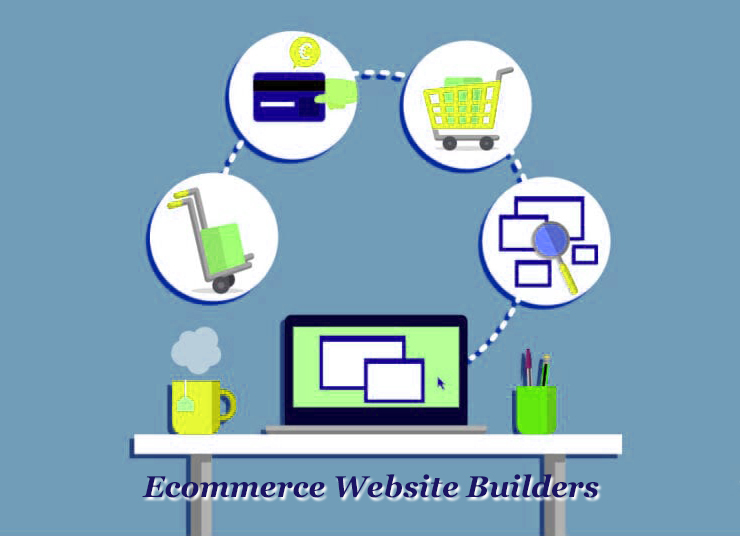Running an online business starts with the right tools. One of the most important tools is an e-commerce website builder. This powerful platform allows you to build a professional, user-friendly online store—even without any coding skills. Whether you’re new to e-commerce or want to scale your business, a reliable builder can help you succeed.

Why Use an E-commerce Website Builder?
An e-commerce website builder greatly simplifies the store-building process. As a result, you don’t need to hire a developer. Instead, you get pre-built templates, drag-and-drop tools, and built-in features. These builders let you focus on selling, not coding. They also save you time and reduce upfront costs.
A good builder ensures your store not only looks great but also functions smoothly. Additionally, it gives you full control over layout, design, and features. This way, you can easily customize everything to match your brand identity. Plus, most builders offer mobile-responsive templates, so your store looks great on any device.
Key Features to Look For
Not all builders are created equal. Look for these essential features:
- User-Friendly Interface: Choose a builder with an intuitive dashboard. Ideally, it should be easy to navigate, user-friendly, and simple to use from the start.
- Customizable Templates: Templates should not only look modern but also offer flexible customization options to match your unique brand style.
- Secure Checkout: Customers need a secure way to pay. Look for SSL certificates and fraud protection.
- Mobile Optimization: Your store must work on all screen sizes.
- Payment Gateway Integration: Accept various payment options like credit cards, PayPal, and digital wallets.
- SEO Tools: Built-in tools should help improve search engine rankings.
- Marketing Features: Look for email marketing, coupons, and social media integration.
- Inventory Management: Track products and update stock in real time.
- Customer Support: 24/7 support helps you resolve issues quickly.
Top Benefits of Using a Builder
Using an e-commerce website builder offers several advantages:
- Faster Launch: You can get your store online in hours, not weeks.
- Cost-Effective: Builders cost less than hiring a full development team.
- Scalability: You can start small and scale as your business grows.
- Professional Appearance: Templates give your store a polished, modern look.
- Time Savings: You don’t spend time coding or fixing bugs.
- Built-In Tools: Everything you need is in one place.
Choosing the Right Builder for Your Business
Since different businesses have different needs, it’s important to choose a builder that aligns with your specific goals and industry. For example, a boutique clothing shop needs high-quality image galleries. A bookstore may need advanced search filters. Make a list of must-have features before you choose a platform.
Start by reading reviews and exploring free trials. Fortunately, most builders offer demos or limited-time access to their platforms. Next, test the dashboard to ensure it’s user-friendly. Then, upload a few products to see how the process works. After that, try the checkout process to check for ease and functionality. Altogether, these steps help you confidently choose the right tool for your business.
Popular E-commerce Website Builders
Here are some well-known builders worth considering:
- HostOtter: Known for ease of use and strong features. Ideal for beginners and pros.
- Wix eCommerce: Great drag-and-drop interface. Suitable for small to medium stores.
- BigCommerce: Offers robust tools and scalability. Good for growing businesses.
- Squarespace: Known for beautiful design. Best for creative industries.
- Weebly: User-friendly and budget-friendly. Great for first-time sellers.
Each platform offers different strengths. Choose the one that aligns with your goals and budget.
Optimizing Your E-commerce Store
Building the store is only the beginning; however, ongoing optimization is key to long-term success. To start, focus on SEO. Use relevant keywords in your titles, descriptions, and image tags to help your site rank higher on Google. In addition, add clear product descriptions and use high-quality images to boost trust and engagement. Make sure your checkout process is fast and simple. Also, offer multiple payment options to increase convenience for your customers. Together, these changes improve satisfaction and reduce cart abandonment. Moreover, use analytics to track performance. Most builders include built-in tools to monitor traffic and sales. Analyze where your visitors come from and identify your best-selling products. Then, adjust your marketing strategy based on that real-time data for better results.
Common Mistakes to Avoid
Avoid cluttered designs. Keep your layout clean and easy to navigate. Don’t ignore mobile users. More than half of shoppers use phones. Don’t skip testing; it’s essential for a smooth user experience. Ensure every page loads correctly. Additionally, check that all links work and buttons respond properly. Regularly test the checkout process to catch issues early. Furthermore, avoid slow loading times by optimizing images and using fast, reliable hosting. Remember, shoppers won’t wait for slow websites. Finally, don’t overlook customer support—respond to questions quickly, and consider offering a help center or live chat for instant assistance.
Conclusion: Build Smarter with an E-commerce Website Builder
An e-commerce website builder provides everything you need to launch and grow an online store. Moreover, it saves time, reduces costs, and, most importantly, offers powerful features. Whether you’re just starting or scaling up, the right builder makes the process easier and more efficient. If you are looking for a reliable e-commerce hosting business then we definitely recommend HostOtter.com, we have been using them for over 15 years and have nothing but great experiences.
First, choose a builder that aligns with your business goals. Then, focus on design, functionality, and customer experience. As a result, with the right setup, you can create a professional, high-performing store that drives sales and builds trust.